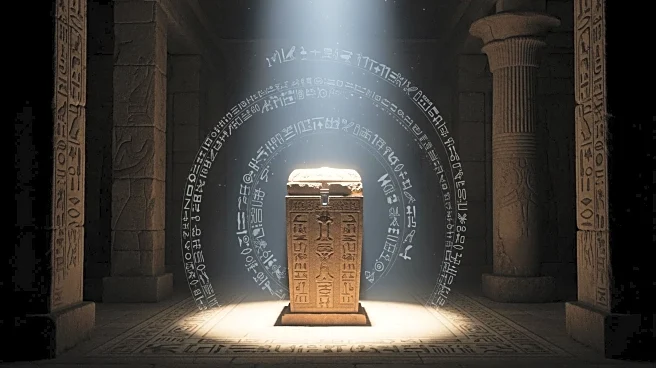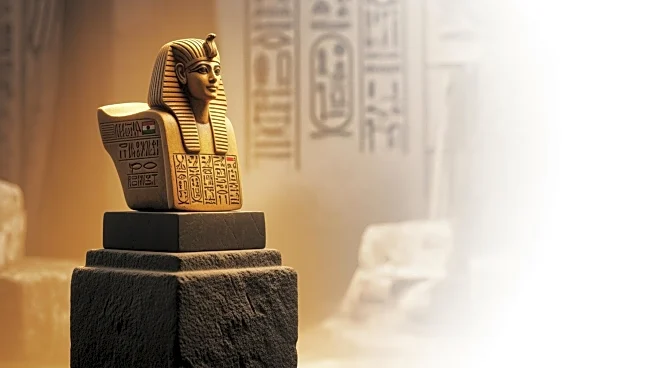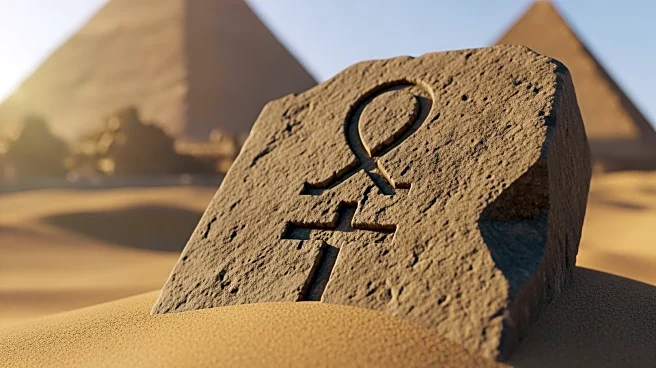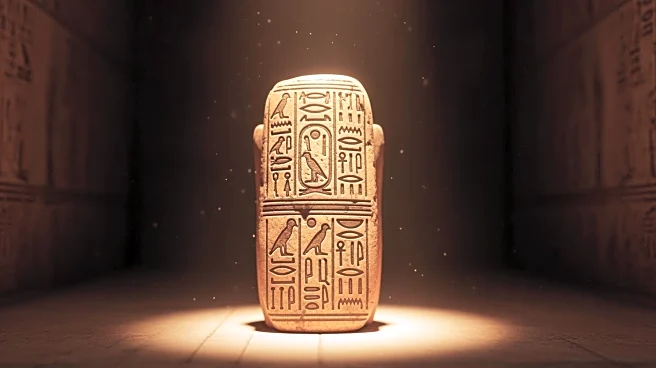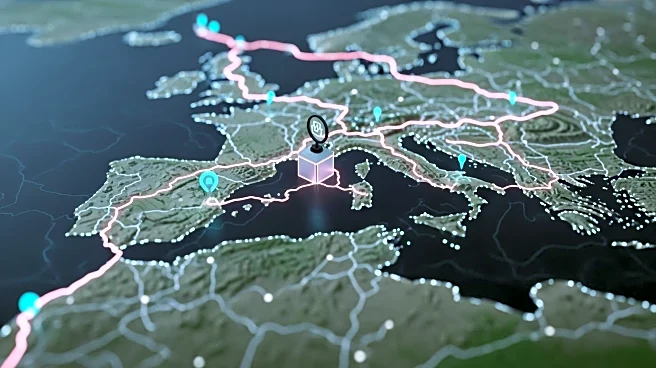What's Happening?
Researchers from Cairo University and the Technical University of Munich have identified 'air-filled voids' beneath the eastern face of the Menkaure pyramid, suggesting a hidden entrance. Using non-invasive
techniques such as electrical resistivity tomography, radar, and ultrasonic testing, the team mapped two gaps behind the granite façade. These findings are part of the Scan Pyramids project, which aims to explore and understand pyramid structures using advanced archaeological tools.
Why It's Important?
The discovery of potential hidden entrances in the Menkaure pyramid could significantly enhance our understanding of ancient Egyptian architecture and burial practices. It highlights the importance of non-invasive archaeological methods in preserving historical sites while uncovering new information. This research may lead to further exploration and discoveries within the Giza plateau, contributing to the field of Egyptology and attracting global interest in ancient history.
What's Next?
Further investigation using other non-destructive techniques is recommended to map the full extent of the anomalies within the Menkaure pyramid. The findings will likely be discussed among Egyptologists to determine the significance of the potential entrance. Continued research may lead to new insights into the construction and purpose of the pyramids, potentially revealing more about the Fourth Dynasty ruler Menkaure and his era.
Beyond the Headlines
The use of advanced technology in archaeology represents a shift towards more sustainable and ethical research practices. By minimizing physical intervention, researchers can preserve the integrity of historical sites while gaining valuable insights. This approach may inspire similar projects worldwide, promoting the use of technology in cultural preservation and historical exploration.


